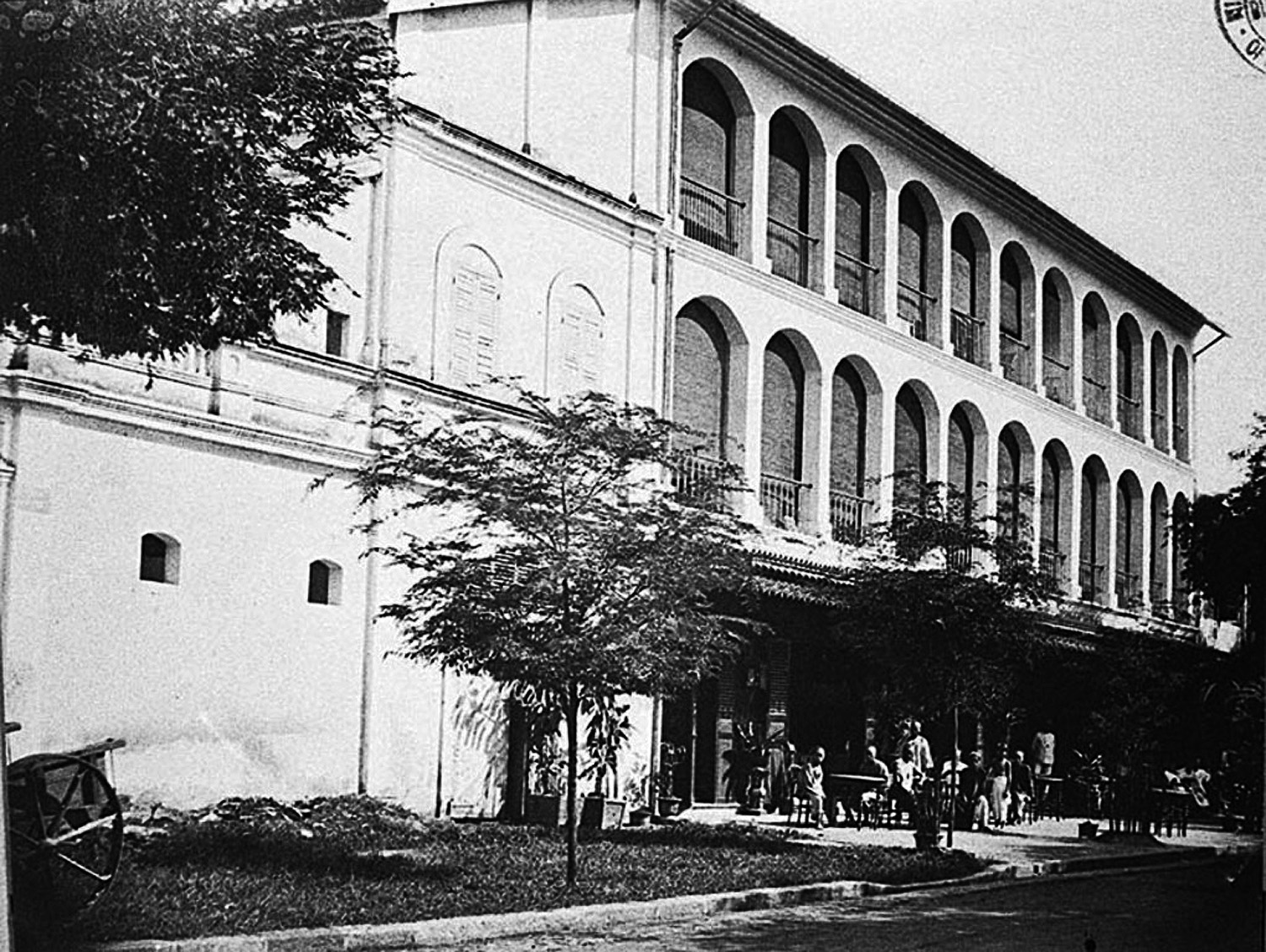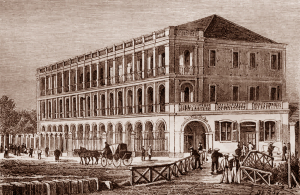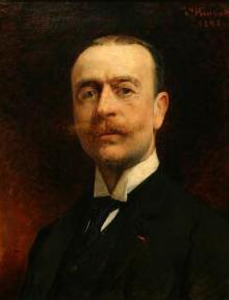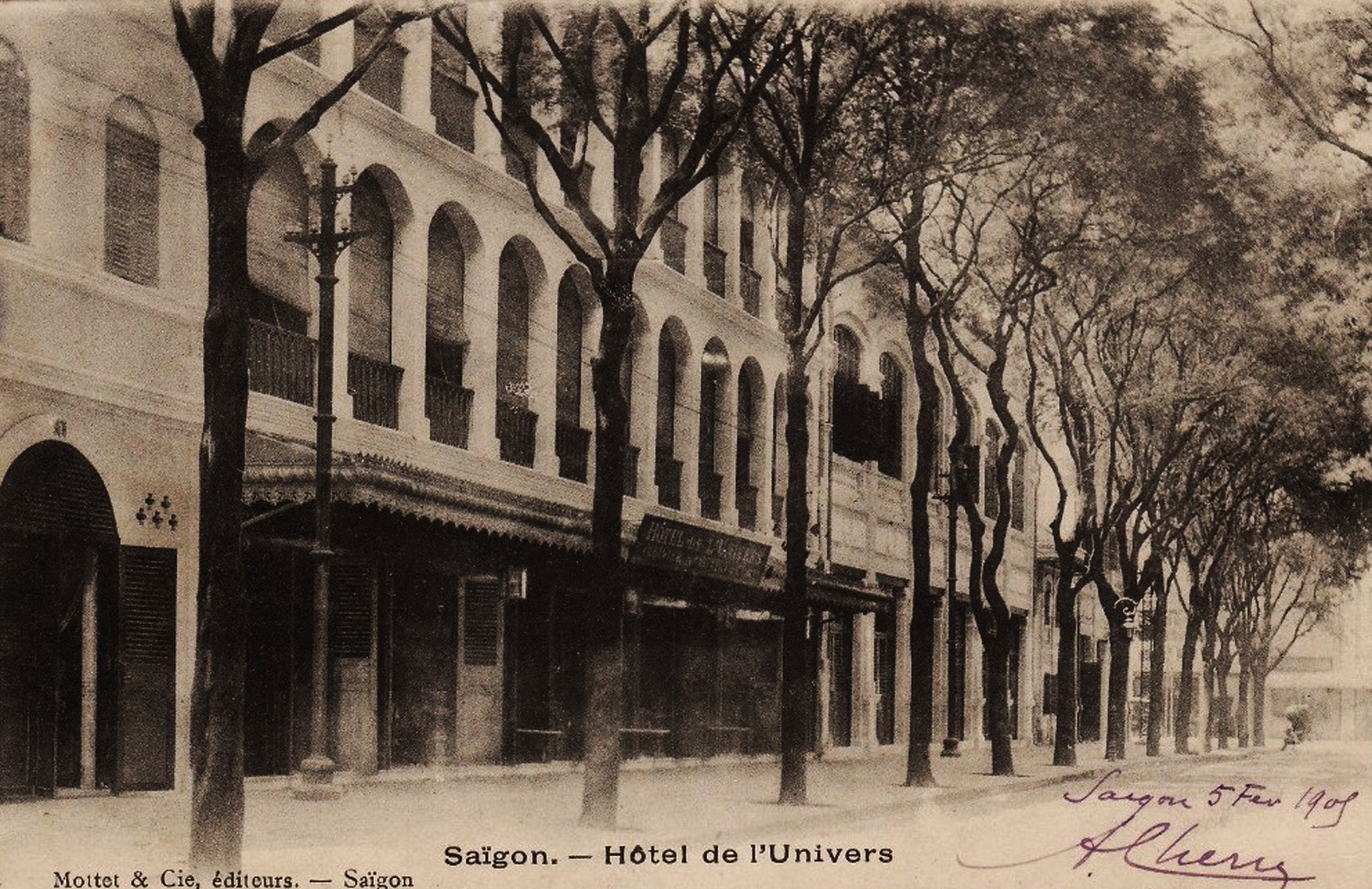
The Hôtel de l’Univers in the late 19th century (MAP)
This article was published previously in Saigoneer http://saigoneer.com
Contrary to what many tourist websites would have us believe, the Grand Hôtel Continental was not Saigon’s first up-market hotel.

The Hôtel Cosmopolitan, aka the Hôtel Wang-Taï
That title may legitimately be claimed by the Hôtel Cosmopolitan, aka the Hôtel Wang-Taï, housed in the former riverfront residence and office of Cantonese opium dealer Wang Tai, which as early as December 1869 provided “sumptuous apartments” for the state visit of King Norodom of Cambodia – see Wang Tai and the Cochinchina opium monopoly.
However, from the 1870s onwards, most French visitors to Saigon chose to stay not at the Hotel Cosmopolitan, but rather at the Hôtel de l’Univers, which opened in around 1872 under the management of a Monsieur A Lacaze. Initially a two-storey building on rue Vannier (now Ngô Đức Kế street), it was later rebuilt as a three-storey structure with its main entrance (and also its café and bar) at 1 rue Turc (now Hồ Huấn Nghiệp street).
In her 1892 book Les Indes et l’Extrême Orient, impressions de voyage d’une parisienne, wealthy French widow Louise Bourbonnaud describes how, during her 1888 stay at the Hôtel de l’Univers, she rented “a suite comprising two rooms on the first floor” which included “a beautiful bedroom with a large covered balcony overlooking the garden courtyard” and another room “overlooking the street and furnished with a dressing table, a writing desk, a sofa and three side tables.”

Hugues Krafft, who stayed at the Hôtel de l’Univers in 1881
It seems that the hotel’s reputation was based more on the quality of its cuisine than on the comfort of its rooms. In his 1885 book Souvenirs de notre tour du monde, wealthy Parisian photographer Hugues Krafft commented that the hotel, in which he stayed during his 1881 visit, “had been recommended to us for its cuisine, the reputation of which was maintained by Monsieur Ollivier, former head chef of the Governor.”
By 1886 chef Ollivier and his brother had taken over the management of the hotel from Lacaze. However, it seems that the Ollivier Brothers failed to overcome the popular perception that the best thing about the hotel was its restaurant. Describing his 1887 stopover in Saigon in the 1891 book Souvenirs chinois, Léon Caubert recounted the popular adage that one should choose “the Hôtel Laval for sleeping and the Hôtel de l’Univers (Ollivier) for eating.”
As there was no plumbing in the hotel rooms, guests wishing to take a bath or shower were obliged to visit the hotel’s “hydrotherapy annex,” located opposite the hotel on rue Vannier.
In 1885, Hugues Krafft described this installation as “primitive and unkempt,” accusing its Chinese staff of being “sullen and unpleasant individuals, who most of the time couldn’t even be bothered to respond to the requests of the guests.”

Louise Bourbonnaud, who stayed at the Hôtel de l’Univers in 1888
However, staying at the hotel three years later, Louise Bourbonnaud was somewhat more charitable about the annex: “Back at the hotel, I prepared myself for a cold bath, as always. But I found that the hydrotherapy unit, which did so much to gain my admiration when I first arrived, didn’t always work properly. When I went to turn on the stopcock, I succeed only with great difficulty and end up showering myself a little more than I would have desired. I laughed, of course, because when travelling, this kind of thing can be expected.”
By the turn of the century, the choice of up-market hotels in Saigon had expanded significantly and the golden age of the Hôtel de l’Univers was over. In addition to the Grand Hôtel Continental, these included the Hôtel des Nations, the Hôtel de la Paix and the Hôtel de Bretagne on boulevard Charner, the Hôtel de la Gare on boulevard de Canton, and the Hôtel de France and the Hôtel de la Rotonde on rue Catinat.
This grand old Saigon institution made its last appearance in a French government directory of 1923, when it was listed as being under the management of Messrs Ange Frasséto and Eugène Sicé, then owners of the Grand Hôtel Continental. The Hôtel de l’Univers is believed to have shut shop in the mid 1920s.

The Hôtel de l’Univers in 1906
Tim Doling is the author of the guidebook Exploring Saigon-Chợ Lớn – Vanishing heritage of Hồ Chí Minh City (Nhà Xuất Bản Thế Giới, Hà Nội, 2019)
A full index of all Tim’s blog articles since November 2013 is now available here.
Join the Facebook group pages Saigon-Chợ Lớn Then & Now to see historic photographs juxtaposed with new ones taken in the same locations, and Đài Quan sát Di sản Sài Gòn – Saigon Heritage Observatory for up-to-date information on conservation issues in Saigon and Chợ Lớn.

